June 2022 - You are accessing an old version of our website. The SDGs Voluntary Commitments have been migrated here: https://sdgs.un.org/partnerships
You will be redirected to the new Partnership Platform in 10 seconds.
June 2022 - You are accessing an old version of our website. The SDGs Voluntary Commitments have been migrated here: https://sdgs.un.org/partnerships
You will be redirected to the new Partnership Platform in 10 seconds.
The ASEAN SDGs Frontrunner Cities Programme (SDGs-FC) is a new initiative under the ASEAN Working Group on Environmentally Sustainable Cities (AWGESC) funded by the Japan-ASEAN Integration Fund (JAIF). The programme expects to raise the capacity and profile of 27 (t.b.c.) ASEAN cities, (comprising ‘SDGs Frontrunner Candidate Cities’ and ‘Model Cities’) to develop and scale up multi-dimensional benefit model practices/policies towards clean and green sustainable development. It will also actively catalyse the agenda of SDGs localisation to contribute towards the national voluntary reporting and implementation of the SDGs in ASEAN Member States.
The Sustainable Development Goals (SDGs) is a highly ambitious and comprehensive set of 17 Goals, 169 targets and 244 indicators which are intended to be pursued with an integrated, rather than a silo approach. However, the capacity gaps at the local level mean that ASEAN city leaders and officials may prefer a more pragmatic approach by focusing on several goals based on local priorities and respective unique contexts.
Presently, many ASEAN cities are awaiting instructions from the higher levels of government on how to localise the SDGs – a complicated process which is ongoing and far from complete in many ASEAN Member States (AMS). The participating cities of the ASEAN SDGs Frontrunner Cities Programme (SDGs-FC) are the nominated as ‘candidate frontrunners cities’ (FC) in their respective countries to develop innovative and replicable good practices terms of localising the SDGs, even if the absence of clear national guidance. For a start, in the first phase they will focus on reviewing and interpreting SDG-11 and environment-focused goals (6, 7, 11, 12, 13, 14) and explore their inter-linkages with other goals.
National Focal Points (mainly environmental ministries/agencies) in 8 ASEAN Member States and participating cities.
Brief Project Description – 300 words max:
The ultimate goal of the proposed programme is to support ASEAN cities in achieving inclusive, sustainable, resilient and dynamic development in line with ASEAN Vision 2020 by aligning city actions with the Sustainable Development Goals (SDGs) of the 2030 Agenda for Sustainable Development. To attain the goal, the Programme will support the planning and implementation of multi-benefit model projects, as well as developing the capacity of next generation cities, and sharing the experiences and knowledge generated from the Programme among ASEAN member states (AMS) to promote replication towards clean and green ASEAN.
The Programme will identify candidate cities for the “ASEAN SDGs Frontrunner City (FC)” from those cities willing to promote SDGs planning and actions. In order to be qualified as an FC, candidate cities need to demonstrate their capability to plan and implement priority actions on SDGs through involvement of multiple stakeholders. Capacity to monitor and evaluate actions for continuous improvement is also required, which promotes sustainability of local actions. To this end, the programme will apply the framework of Plan-Do-Check-Act (PDCA) cycle to check the progress of actions, including capacity development of cities so that they can follow the framework.
Some of the key activities include (i) identifying priority SDGs actions of candidate cities and giving them financial support to demonstrate selected actions; (ii) promoting a Voluntary National Review (VNR) by linking monitoring and evaluation of the sub-national actions to VNR mechanisms; (iii) facilitating knowledge exchange amongst cities through national and regional workshops for replication of good practices,; and (iv) providing opportunities for secondary cities to learn from successful cases and implement pilot projects.
A series of outputs are expected. The FC candidate cities will produce a “Priority SDGs Report” and a “Project Action Plan (PAP)”, and the National Focal Points (NPFs) will produce a “Country Report on Cities and SDGs” including the activities of secondary cities based on their “Project Action Plan”. “ASEAN Report on City SDGs Actions” is also planned as a compilation of model practices in addition to the PR materials. The progress and results will be shared widely at international workshops and conferences.
On practical approaches, we have seen many kinds of approaches. The most popular approach appears to be the 'inventory method', where the city (i) makes a list of its top good policies/practices/projects and then (ii) associates as many related SDGs as they can to each.
We found that cities and even national agencies are unclear about the existence of (quantitative) national policies, goals and indicators as well baseline situation, so an external partner is needed (IGES, academia or UN). We think it's not possible within our project to clarify these by themselves for all 17 goals, but we think it's realistic to focus and clarify the national context for the 7 action targets (not implementation targets) under Goal 11.
We expect that once the national policies and targets are clear, cities may be willing and able to set their local targets. However, we found that for ASEAN cities it's not realistic to ask them to set a city-based target and corresponding indicators with a proper regular monitoring system, unless it's an extraordinarily high capacity city.
We observed that many Mayors and city officials are not confident/comfortable at expressing themselves if the word 'targets' is used, as it sounds too official and also may have political implications (hard targets not met imply failure). Therefore, we decided to adopt the word 'expectations' (softer) instead of 'targets'.
We found that it is productive to set time aside to explain the individual targets within SDG-11, as most cities won't do it independently for their own reasons.
After explaining each target, it is very meaningful and interesting for city stakeholders to clarify or interpret the subjective/vague expectations under the global goals. This will help the city practitioners feel that the SDGs are truly related to the concerns of the average person instead of it being a lofty, rhetorical tool.
We created a trial survey at 1st Thai National SDGs Workshop held in January 2019, and we issued a survey focusing on teasing out 'expectation' or 'interpretation' for targets under SDG-11. We are still studying the responses and will administer the next survey at our upcoming regional SDGs workshop in June 2019.
These factors and constraints are still under analysis and observation.
These factors and constraints are still under analysis and observation.
The role of local governments in achieving SDGs is crucial since close to two thirds of the 17 SDGs are directly relevant to cities. In the past 3 years, many cities have expressed their commitment to the SDGs through regional platforms such as city networks and associations and also formulated local strategic plans on the SDGs. Several cities like New York, Kitakyushu, Toyama, Shimokawa and Seoul have conducted detailed assessments and integrated the SDGs into long term vision, development policies and plans. Such assessments should be replicated to cities in the ASEAN region.
Cities find it difficult to stay motivated to overcome the many barriers and challenges on the path of implementing SDGs. At the local level, motivation must be instilled not only among government officials but all actors including citizens, private sector, academia etc. Sharing a long-term vision and achieving consensus among diverse parties is a key factor of staying motivated and effective localisation.
Another aspect of motivation is the provision of an ‘enabling environment’ with flexible financing for sustainable development projects. For example, PT Sarana Multi-Infrastructure (SMI) in Indonesia. PT SMI was established with the backing of the Ministry of Finance to accelerate the progress of sustainable development projects. In addition to non-commercial financing (e.g. municipal loans), it also offers additional services such as: (ii) advisory based on ‘impact investing’ principles; (ii) matching/aggregation of financing partners (i.e. OneIndonesia platform with gathers different types of financing from 25 entities); (iii) full-cycle project preparation to address the fundamental handicap of project development projects. PT SMI also supports knowledge management; and (iv) knowledge management.
Finally, it is also extremely important to motivate common citizens to support the SDGs by implementing projects which results in visible and clear benefits to local communities, as the SDGs may not be perceived as relevant to daily life. For example, in Lao PDR, model projects for the upgrading of public green spaces and markets in Luang Prabang and Xamneua are presented as aligned with the SDGs, and are very appreciated and highly motivating to locals.
In conclusion, fostering consensus among diverse stakeholders through abundant opportunities for dialogue and conversation, providing an enabling environment especially for financing sustainable projects and connecting the SDGs to the everyday concerns and well-being of the common person are key strategies for ensuring that cities stay motivated to implement the SDGs.
http://urbansdgplatform.org/pdf/IGES%20Policy%20Brief%20-%20ASEAN%20Cities%20Early%20Reactions%20to%20SDGs%20Final%207May2018_FINAL.pdf

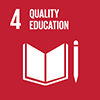
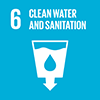
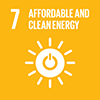




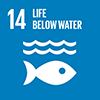

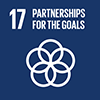
 Start: 26 February, 2018
Start: 26 February, 2018 Completion: 31 March, 2020
Completion: 31 March, 2020